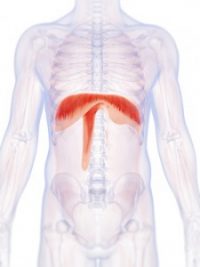
The Avery Diaphragm Pacing System can be an enduring treatment for ventilator-dependent patients with quadriplegia, central sleep apnea including Congenital Central Hypoventilation Syndrome (CCHS), and diaphragm paralysis.
A VALIDATED FEASIBLE TREATMENT
When first developed, some doctors had theoretical concerns that continuous use of a diaphragm pacemaker may cause nerve damage. However, a physicians’ report in the Journal of Pacing and Clinical Electrophysiology (2002) indicates that there are no adverse effects of long-term diaphragmatic pacing. The report concludes that “conditioning of the diaphragm for continuous bilateral pacing is a feasible and effective means of ventilation in patients with complete respiratory paralysis…” The results that Avery Biomedical Devices has seen over the past 40 years directly correspond to these findings.
BREATHING ASSISTANCE FOR OVER 40 YEARS
Introduced over 40 years ago, the Avery Diaphragm Pacing System has been helping patients live a high-quality life for just as many years, proving that diaphragm pacing can be a long term solution for many patients. In fact, Avery Biomedical Devices reports that 22 patients have been successfully diaphragm pacing for over 30 years and two patients have been pacing for over 40 years. Hundreds of other patients have been pacing 10 years or more.
AN IMPROVED QUALITY OF LIFE FOR THE LONG-TERM
Patients who are utilizing diaphragm pacing may enjoy a better quality of life over patients on mechanical ventilation. In fact, patients who need lifetime ventilator support may find that diaphragm pacing offers continuous quality-of-life benefits over a mechanical ventilator. Some of the benefits may include:
- More normalized daily activities including breathing and speech patterns, improved sense of smell and excellent portability and mobility.
- Lower infection rates. There are no percutaneous wires protruding from the skin, eliminating the continuous treatment of an open wound. Pneumonias and other respiratory infections are reduced because of the reduction in suctioning. In some cases, the tracheostomy tube can be removed.
- Cost savings. Patients are able to live outside of an ICU hospital setting. Breathing pacemakers cost far less than the fixed costs and disposable supplies associated with mechanical ventilation. For more information on savings, please see “How Much Does Diaphragm Pacing Cost?”
Contact Avery Biomedical Devices to learn more about diaphragm pacing as a long-term solution.
THE AVERY DIAPHRAGM PACING SYSTEM SYSTEM
The Avery Diaphragm Pacing System System is the only diaphragm-pacing system with full pre-market approval from the USFDA and CE marking privileges under the European Active Implantable Medical Device Directive for both adult and pediatric use. In addition, its system of using small implanted radiofrequency receivers rather than electrode wires that pass directly through the skin may decrease a patient’s risk of infection and ongoing wound care management issues.



